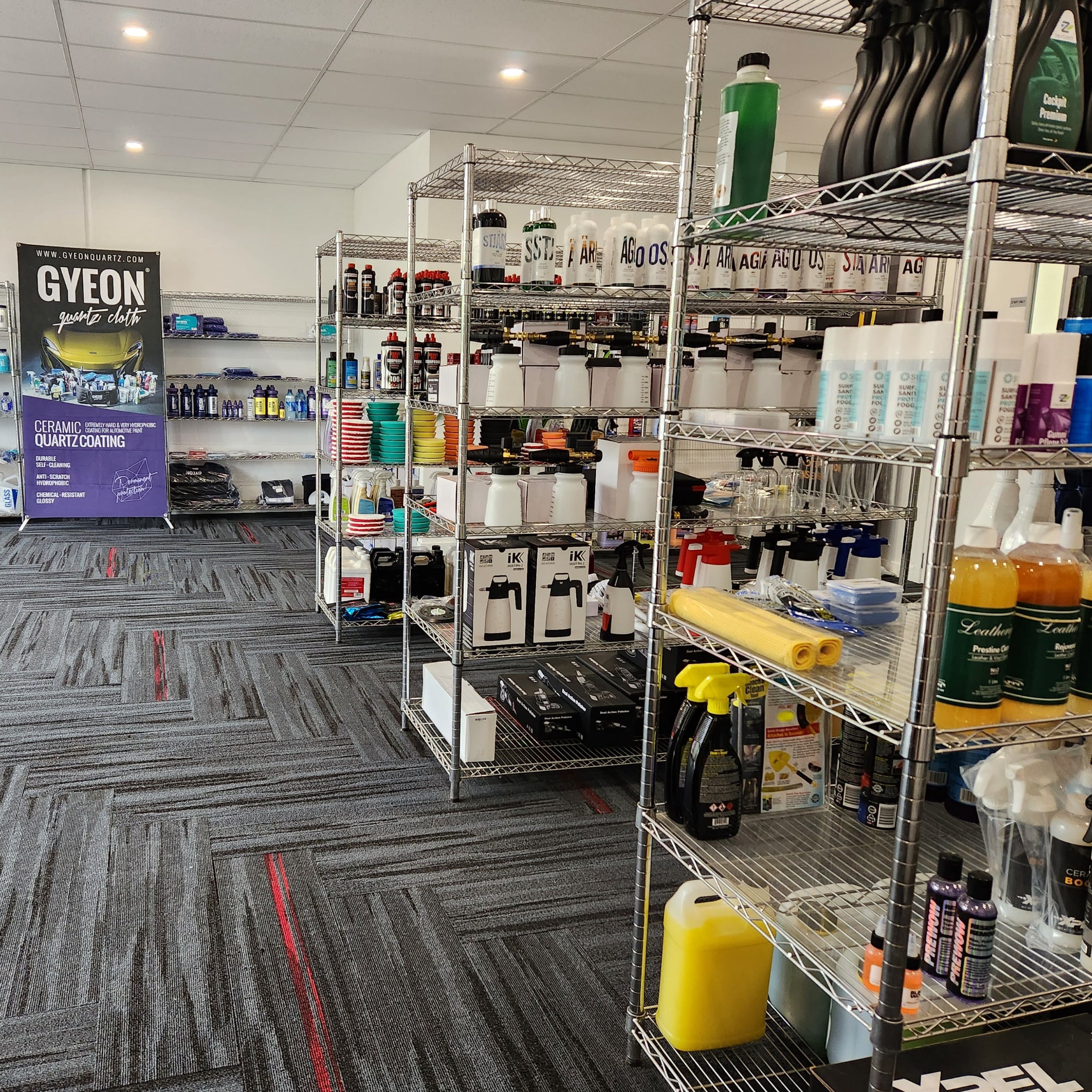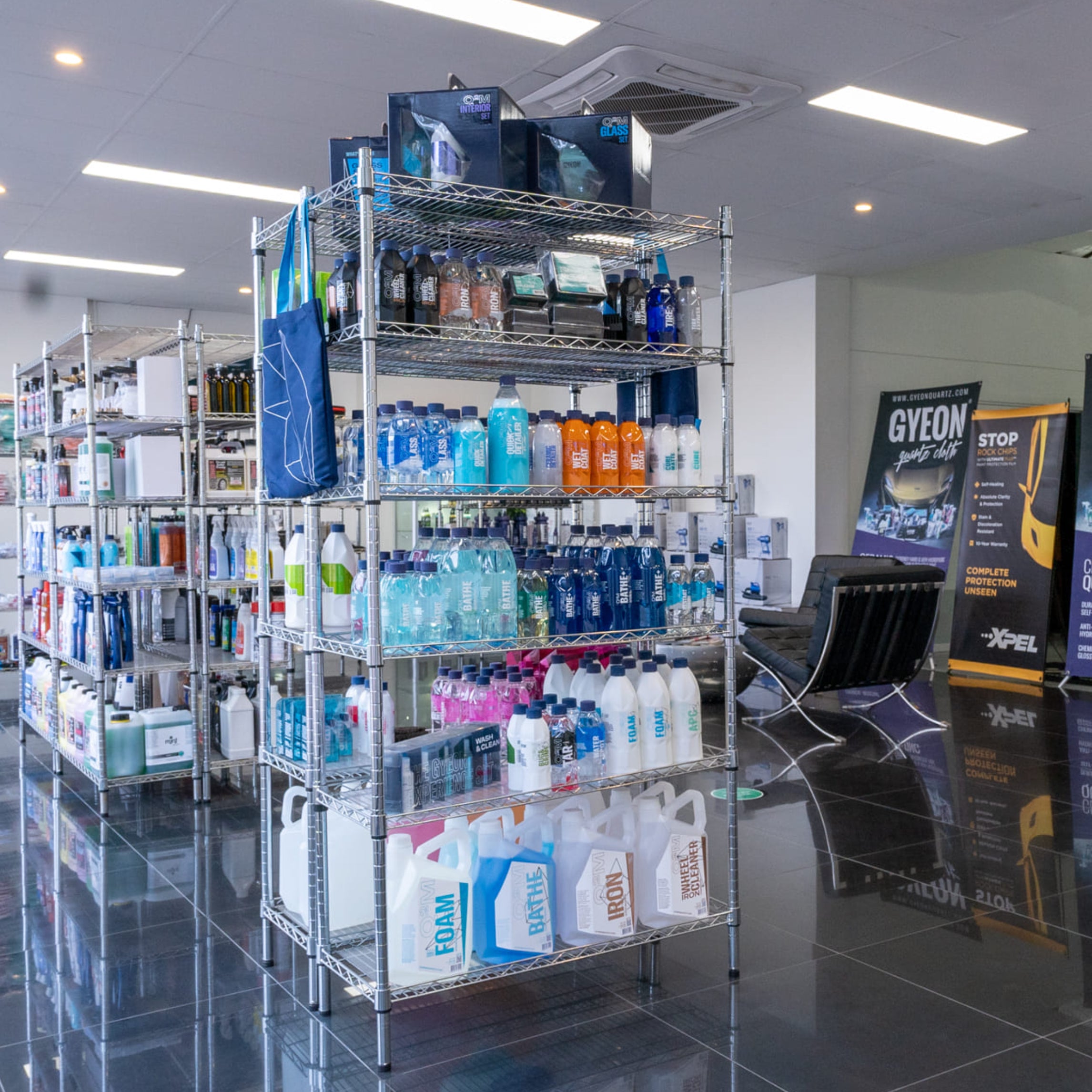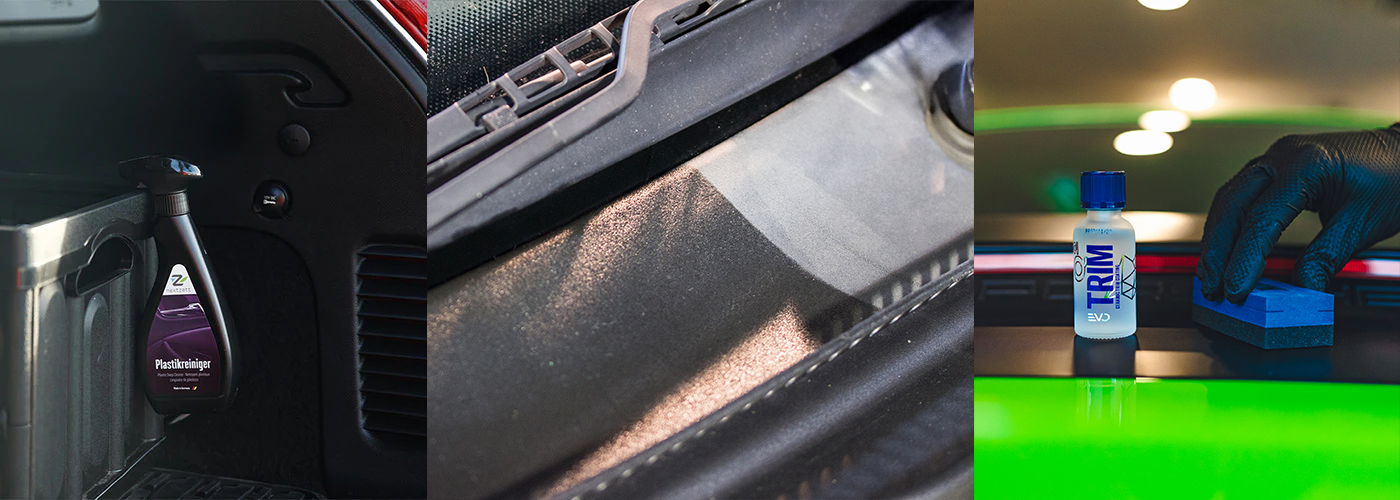We’ve all been there. You get home after a long week, glance at your car, and sigh at the dusty film covering it. You want that clean, glossy look back, but there’s no hose in sight. Whether you’re living in an apartment, facing water restrictions, or just want a faster, tidier way to clean, the waterless car wash is your new best mate.
Forget wasting hundreds of litres of water for a weekend wash. With the right technique and a few smart products, you can safely wash, shine and protect your car without turning on the tap. And yes, it’s completely safe when done correctly.

This guide will walk you through everything you need to know about going hose-free, from the best products available in Australia to the right technique to avoid swirls and scratches. So, let’s help you clean smarter, save water, and keep your car looking freshly detailed even under the Aussie sun.
What Exactly is a Waterless Car Wash?
A waterless car wash is a specially formulated, high-lubricity solution designed to lift and trap dirt without rinsing. Instead of scrubbing and rinsing with a hose, you spray the solution directly onto your car, then gently wipe away the dirt using a microfibre towel. The lubricants encapsulate grime, allowing it to slide off the surface safely.
There are two main ways to go waterless:
1. Pure Waterless Wash
You simply spray the product directly onto your car’s panels using a waterless method approach and then wipe it off using a clean microfibre towel. This dry wash technique is quick, easy, and perfect for cars with light dust or fingerprints, while also helping to conserve water resources.

2. Rinseless (Hoseless) Wash
A rinseless wash uses a small amount of water mixed with a concentrated solution. Microfibre towels are soaked in the mixture, then used panel by panel to wipe down the car. This method may also involve waterless cleaning techniques to ensure a more efficient wash, especially when less water is desired. Follow up with a clean, dry towel for a streak-free finish. Both methods work brilliantly and often use the same products at different dilution ratios. The secret to a swirl-free result is keeping those towels fresh, rotating them frequently, and using at least six to eight for a standard-size car. Incorporating a mitt during the cleaning process can further enhance the effectiveness of the method.
Why Every Aussie Driver Should Try a Waterless Wash
Australia’s harsh climate makes waterless washing more than just convenient; it’s practical. Between water restrictions, dusty roads, and scorching sun, this method ticks all the boxes for smart car care.
1. Saves Water (and Money)
A traditional wash can use up to 150 litres of water. A waterless wash uses under 300ml of product, which translates to saving gallons of water daily with no minimum gallons required. That’s not just saving water, it’s saving money too, especially during dry months when restrictions kick in. Studies show this method is both eco-friendly and budget-conscious, reducing the burden on local water supplies.
2. Quick and Convenient
No driveway? No problem. You can clean your car in an apartment carpark, office garage, or even roadside if you’re careful. With the right quick detailers, which safely clean various exterior surfaces like paint and trim, all you need is a spray bottle, microfibre towels, and about 20 minutes. Most products cost between $20 - $30 and last for an average of 5-6 cleanings, making it a cost-effective fix for busy schedules and limited space.
3. Leaves a Glossy, Protected Finish
Many waterless wash products are packed with gloss enhancers, synthetic sealants, or even carnauba wax. So while you’re cleaning, you’re also laying down a protective, hydrophobic layer that repels water and dust, and leaves your paint looking incredible.
4. Eco-Friendly and Responsible
Traditional washes send dirty, chemical-laden water straight into storm drains. A waterless wash eliminates that. It’s a cleaner choice for your car and the planet.
Choosing the Right Products for a Waterless Wash
Your results depend on the products you choose. The goal is simple: plenty of lubrication with high-lubricity chemicals, safe cleaning agents like soaps containing polymers, and a finish that protects as it shines. These lubricity chemicals encapsulate dirt and draw it into your microfiber towel, preventing scratches while maintaining a glossy finish.
Waterless Wash Solutions
A good product should lift dirt gently without dulling your paint. GYEON ECO Wash is a perfect example. A concentrated, SiO₂-infused formula that can be used as both a waterless and rinseless wash. It’s safe on coatings and waxes, and ideal for everyday use.
All-in-One Detail Sprays
For quick touch-ups, Duragloss Aquawax or GYEON Quick Detailer or Ceramic Detailer are great picks. These products combine cleaning power with a slick layer of protection, giving your paint that just-detailed look in minutes.

What to look out for when choosing detailer products
High-Lubricity Formulas
Look for products that provide a slick, friction-reducing surface. This ensures the dirt glides off instead of grinding into the paint. Products formulated for high lubricity help you clean more safely, especially important on darker or softer paints.
UV and Hydrophobic Protection
Under the Aussie sun, UV damage is no joke. Choosing a waterless wash that adds UV resistance and hydrophobic protection helps preserve your paint and keeps your car cleaner for longer between washes.
Your Hose-Free Car Wash Kit Essentials
Here’s what you’ll need for a proper, safe wash:
- 6–8 premium microfibre towels — use plush towels, like Gyeon’s Polish Wipe, for cleaning as well as for buffing (you should only need 1 towel for buffing). Utilise these microfiber towels to effectively remove dirt and prevent surface scratches from contaminants.
- A trigger sprayer or foaming bottle — for even product coverage, which can help loosen contaminants before wiping.
- A bucket — needed for rinseless washing, but also a handy, optional way to store dirty towels to avoid cross-contamination. This can be alternated if a pressure washer isn't available.
- Detailing spray — for a final protective touch.
Pro tip: Always keep your towels folded and flip to a clean section after each wipe. Contaminated towels are the fastest way to introduce scratches.
Step-by-Step Guide: How to Wash a Car Without Water
Here’s our guide for an effective waterless car wash and achieving a professional finish: no scratches, no streaks. (We will specify where the method changes for those following the Rinseless/Hoseless approach.)
Step 1: Preparation
Park in the shade and ensure your car’s surface is cool. Shake your waterless wash well before applying. Lay out all your towels so you can swap quickly as they get dirty.
Prepare the wash solution following the manufacturer's instructions. For waterless washes, diluting everything in a spray bottle is ideal for application. For a Rinseless wash, dilute the solution in a clean wash bucket and soak your towels in this washing liquid.

Step 2: Work in Sections
Focus on one area at a time: a single door, bonnet section, or fender. This prevents the product from drying before you can wipe it off.
Step 3: Apply Generously
Apply the product liberally across both the panel and the towel you are using. Using a waterless detail solution, which is rich in high-lubricity chemicals and lubricating polymers, ensures that dirt and grime are safely encased and lifted away without abrasion. Don’t hold back. The more lubrication, the safer the wash. Let it sit for a few seconds to loosen dirt.
For Waterless Washes, spray your solution liberally to both the car’s surface and the microfibre towel you are using.
Step 4: Wipe Gently
With a clean towel, wipe in straight lines (never circles), starting from the top and moving down. Flip or switch towels frequently to keep your contact surface clean.

Step 5: Buff to Perfection
Use a second, dry towel to buff away any remaining residue, revealing a glossy, streak-free finish. Move methodically across the car, working from top to bottom.
Step 6: Finishing Touch
Once done, apply a light mist of spray wax or quick detailer for added gloss and protection. It takes two minutes and makes a noticeable difference.
Common Mistakes in Waterless Car Washing Techniques
- Using too little product — This is the biggest mistake. Always keep the surface well-lubricated to prevent streaking and ensure a thorough clean.
- Neglecting the bonnet — Overlooking the bonnet can lead to buildups that are difficult to remove later, especially if you have bird droppings or heavy debris. Make sure to include the hood in your routine for best results.
- Dirty towels — Never reuse a contaminated towel. Keep swapping to avoid scratching.
- Ignoring the hard-to-see areas — Areas like the roof and lower panels often collect a surprising amount of dirt and bird droppings. Giving these areas attention can help prevent paint damage.
- Washing a heavily soiled car — If your car is caked in mud or thick dust, rinse it first. Waterless washes are for light-to-moderate grime.
- Skipping a panelling approach — Using a systematic method, such as cleaning each panel at a time from the hood to trunk, ensures you miss no spots.
- Working in full sun — The heat will cause the product to dry too fast, leaving streaks.
Avoid these mistakes and you’ll get flawless results every time.
The Benefits Beyond the Shine
Waterless washing isn’t just about saving time or water. It changes how you care for your car. You can clean your vehicle more often, in more places, and with fewer resources. Over time, that means a better-maintained finish, fewer swirls, and a smaller environmental footprint.
For apartment dwellers or city drivers, it’s a game-changer. No driveway needed, just good technique and quality products.
Myth Busting: Common Questions About How Waterless Car Washes Work
Is it really safe for my paint?
Yes, absolutely. When done properly with enough lubrication and clean towels, waterless washing is just as safe as traditional washing.
Can I use it on glass or wheels?
Definitely, most formulas work well on glass, trim, and coated wheels. Avoid heavily contaminated wheels and use a dedicated wheel cleaner for them instead.

Can it replace traditional washing completely?
Not entirely. Think of it as maintenance between full washes. For heavy dirt or road grime, a foam pre-wash and rinse is still best.
How often can I use it?
As often as needed. Once or twice a week works great for keeping your car spotless between bigger washes or details.
Ready to Go Waterless?
Waterless washing isn’t just a fad; it’s the future of smart, efficient car care. With the right technique and quality products, you’ll save time, water, and money while keeping your car looking freshly detailed.
So grab a bottle of waterless wash, a few microfibre towels, and see how easy a showroom shine can be, no hose required.





